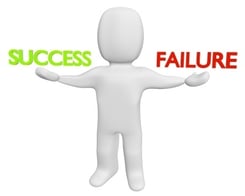How is 2017 going so far? Are you in cruise control or is your business chaos central? Be honest now! The last quarter of the year is always difficult to manage in order to achieve 2017 results without negatively impacting 2018.
 When your business still relies on a healthy traditional trade serviced by distributors the balance of sales in versus sales out is always a challenge. Any major discrepancy will alert the auditors and in particular you do not want be accused of loading the trade to meet the planned numbers.
When your business still relies on a healthy traditional trade serviced by distributors the balance of sales in versus sales out is always a challenge. Any major discrepancy will alert the auditors and in particular you do not want be accused of loading the trade to meet the planned numbers. If you have let your distributor stocks get out of control this can be remedied through discipline and rigour plus top-down leadership ideally through a dynamic S&OP process.
- Month, quarter and year-end push - Run your business on one set of numbers agreed at Board level and ensure NOBODY operates an alternative private agenda. If you follow a decent S&OP process such last minute, period-end pushes can be avoided. Let's face it; period-end sales pushes place huge strain on everybody in the organisation yet only the sales people receive a bonus for these efforts!
- Failed launches - Be realistic with new product launch volume projections. Brand Managers will always, repeat always overstate how successful their new SKU is going to be. They do not want to appear unambitious and nor do they want to run out of stock. This is what happens when self-interest decisions are taken outside of a healthy S&OP process.
- Old label stock - New launches are not a surprise and with half-decent planning you can avoid seeing old label inventory ageing in the distributor warehouse. As soon as you start pumping in a new label SKU the distributor will stop selling the old one. "Well that's his problem" - no it isn't! It blocks his warehouse, his cash and your customer service. If you plan your launch volume ramp-up well you can avoid this. Consider running a sink-market region where all stocks of the old label SKU are sold out, possibly with a discount.
- Old and expired promotions - If promotions have failed and do not move then bite the bullet and take rapid and direct action. Dismantle co-packs and put the valuable and original SKUs back into stock and/or re-label special offer packs.
- Customer returns - Producer sales forces struggle with this and particularly when it concerns International Key Accounts. You need a cast iron agreement on responsibility AND authority for customer returns. If this is contractually agreed then fine, take the stock back and recycle within your system. If there is no definite agreement then you leave the door open to individual sales people taking unilateral decisions to accept returns to get clients off their backs. Unexpected and unmanaged returns cause havoc in logistics, warehousing and in ERP's.
- Producer forecasting errors - No forecast is ever 100% perfect and nor should it be, by definition. However, if you measure your forecast accuracy by SKU and take actions to improve accuracy then this source of overstock can be significantly reduced. Ignore calls to measure accuracy by brand or by category as the data is useless to the people supplying the products.
- Damaged and expired. This is really an accumulation of all the items above. Damaged and expired products will be present in any business. To ensure they do not appear in the ERP as good stock it is important to write off and dispose of them as soon as possible.
If you need to destock your distributors before the auditors come sniffing then you should get on with this quickly. No resources available? Look at who is available to help you get these tasks completed. Crush the internal resistance and get the job done now!
Image courtesy of nonicknamephoto at freedigitalphotos.net







